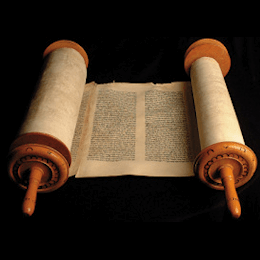Textus Receptus Bibles
Masoretic Text 1524
Old Testament
| 4:1 | ויען אליפז התימני ויאמר׃ |
| 4:2 | הנסה דבר אליך תלאה ועצר במלין מי יוכל׃ |
| 4:3 | הנה יסרת רבים וידים רפות תחזק׃ |
| 4:4 | כושׁל יקימון מליך וברכים כרעות תאמץ׃ |
| 4:5 | כי עתה תבוא אליך ותלא תגע עדיך ותבהל׃ |
| 4:6 | הלא יראתך כסלתך תקותך ותם דרכיך׃ |
| 4:7 | זכר נא מי הוא נקי אבד ואיפה ישׁרים נכחדו׃ |
| 4:8 | כאשׁר ראיתי חרשׁי און וזרעי עמל יקצרהו׃ |
| 4:9 | מנשׁמת אלוה יאבדו ומרוח אפו יכלו׃ |
| 4:10 | שׁאגת אריה וקול שׁחל ושׁני כפירים נתעו׃ |
| 4:11 | לישׁ אבד מבלי טרף ובני לביא יתפרדו׃ |
| 4:12 | ואלי דבר יגנב ותקח אזני שׁמץ מנהו׃ |
| 4:13 | בשׂעפים מחזינות לילה בנפל תרדמה על אנשׁים׃ |
| 4:14 | פחד קראני ורעדה ורב עצמותי הפחיד׃ |
| 4:15 | ורוח על פני יחלף תסמר שׂערת בשׂרי׃ |
| 4:16 | יעמד ולא אכיר מראהו תמונה לנגד עיני דממה וקול אשׁמע׃ |
| 4:17 | האנושׁ מאלוה יצדק אם מעשׂהו יטהר גבר׃ |
| 4:18 | הן בעבדיו לא יאמין ובמלאכיו ישׂים תהלה׃ |
| 4:19 | אף שׁכני בתי חמר אשׁר בעפר יסודם ידכאום לפני עשׁ׃ |
| 4:20 | מבקר לערב יכתו מבלי משׂים לנצח יאבדו׃ |
| 4:21 | הלא נסע יתרם בם ימותו ולא בחכמה׃ |

Masoretic Text 1524
The Hebrew text of the Old Testament is called the Masoretic Text because in its present form it is based upon the Masora—the Hebrew, textual tradition of the Jewish scholars known as the Masoretes (or Masorites). The Masoretes were rabbis who made it their special work to correct the faults that had crept into the text of the Old Testament during the Babylonian captivity, and to prevent, for the future, its being corrupted by any alteration. They first separated the apocryphal from the canonical books, and divided the latter into twenty-two books, being the number of letters in the Hebrew alphabet. Then they divided each book into sections and verses.
There is a great difference of opinion as to when the Masoretic Text was written, but it was probably accomplished in the 10th -11th century. Several editions existed, varying considerably, but the received and authoritative text is that of Jacob ben-chayim ibn Adonijah, who carefully sifted and arranged the previous works on the subject. It was published in 1524.